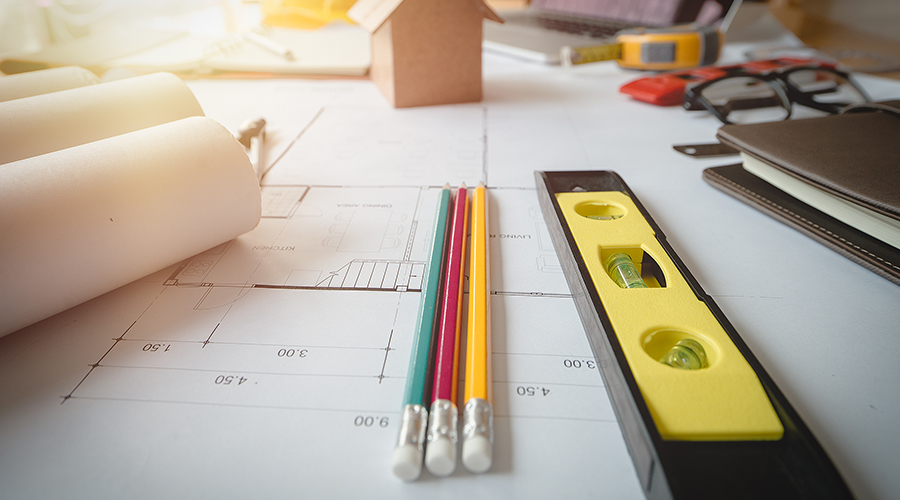The Impact of the Built Environment

In a recent Community as Strategy webinar event, presented by KI and IIDA, three San Francisco designers with an abundance of local knowledge discussed with moderator Cheryl S. Durst the ways that built environments impact all of us and how we can continue designing with purpose post-pandemic.
Interior designers are collectors of stories and experiences, and it’s up to them to translate those experiences into the built environment. What can this look like post-COVID-19 and how can designers take into meaningful consideration both internal stakeholders and external communities when creating a physical space?
As 2020 comes to a close, we continue to find ourselves challenged in finding ways to rally around built environments as an expression of common goals and values. Our personal and professional networks, however, have become more important than ever, as strong communities are what sustain us. But we sure do miss our offices, and designers are reimagining how we can better utilize shared spaces in the future—whatever it may look like—and how they can be built to help us sustain and grow our communities.
Space Means a Lot
“You can’t just replace everything with a screen,” says Sandra L. Tripp, IIDA, principal and managing director of the Huntsman Architectural Group’s New York office. Even in the midst of a pandemic and an increased need for virtual interaction, “we still want to make connections with human beings. We shouldn’t always be looking at dead space when we’re having conversations with one another.”
Shared space is important to us—it provides us with a sanctuary where we can collaborate and communicate with members of our community. For organizations, the physical space is often an important, front-facing articulation of their values, branding and corporate culture. Tripp gives the example of Huntsman’s Tarkett showroom project in Chicago, which beyond displaying products, was designed to be a place for the corporation to hold various seminars and classes and connect with local creatives.
It’s no wonder that we are cautiously yet eagerly awaiting the return to the office. Interior designers and architects are actively imagining new ways employees can once again utilize their workplaces in addition to working out safer ways for external communities to be involved in these spaces, with a focus on wellness, health and safety.
The Impact of Design
As we have begun to rethink our spaces in terms of health and safety, designers are also cognizant of the ever-growing need for designing sustainably—whether that means repurposing materials, gaining a deeper understanding of waste streams, or utilizing already existing buildings to avoid hazardous demolition conditions. Clients are savvier than ever when it comes to sustainability and they want assurance that design firms are employing sustainable practices and being creative within projects, for both the purpose of caring for the earth and for cutting unnecessary costs.
“The larger conversation is about impact and understanding as a designer the many scales of impact that you have in the decisions you’re making,” says Amy Campos, IIDA, founder and principal of ACA and tenured associate professor and chair of interior design at the California College of the Arts. “We are constantly refreshing interiors and architecture, so we need a critical perspective on waste and sustainability, not just aesthetics.”
In addition to sustainable practices, part of understanding the impact of design is knowing how and who a project will affect. When designing with a “community as strategy” method in mind, designers make certain that the spaces they are envisioning are reflective of people’s stories and needs.
As an educator, Campos regularly works with students on design problems and encourages them to assemble a full vision of who is at stake with the creation of every project. In one studio, Campos recalls a restaurant project that students took on by considering individual design elements separately—from sound, to light, to air—for a holistic and thoroughly imagined experience. Part of the assignment was writing stories and backgrounds for the people who would eventually use the space. “The core idea is we start with stories about people; as designers, we use the interior as a tool to design culture," says Campos, “that is how we create place.”
Bringing the Outside In
When we talk about “community,” or when we think about who is impacted by a design project, we aren’t always describing the most obvious and visible group of end-users. Every time a new building goes up or an older space gets repurposed, it directly and indirectly affects outside communities, for better or for worse. “Companies and organizations can no longer be disconnected from external communities, especially after the pandemic has blurred our lives,” says David Meckley, IIDA, principal at Huntsman Architectural Group. “Clients want to know how firms and organizations can actually be a part of the community they are building in.”
This can be a tricky and sensitive undertaking, especially when considering that those external communities may have already been touched negatively by gentrification and see a new design project as a part of a wider urban problem for themselves and their families. Meckley agrees that while it is often challenging, creating meaningful space for external communities within your built environment can and will ultimately benefit everyone.
Meckley gives the example of the advertising agency Argonaut taking over the iconic Avalon Ballroom space in San Francisco’s Tenderloin neighborhood. Their new workplace had to be reflective of the important cultural history of the building and also connect with locals. In order to achieve this, the agency uses its repurposed main ballroom for various events that are often free and open to the public. Meckley also mentions a project Huntsman designed for a tech company with a 14-floor downtown campus; the organization worked with a group representing Bay Area street artists and commissioned various murals and pieces of art around the office. The artists were then allowed to enter the space when they needed to showcase their work.
COVID-19 is presenting an interesting challenge for the design of these kinds of community-centric spaces; how do we encourage connection when we are nervous about being around each other? Mackley says that though there will be some anxiety regarding bringing external communities into spaces for some time if we continue to strengthen our internal communities in their goals and values, we will be ready and prepared for engaging with the outside world in meaningful and positive ways. Once we get past the initial separation for safety, we will move closer to designing for togetherness.
Subscribe
Stay up to date with the latest trends and more.
